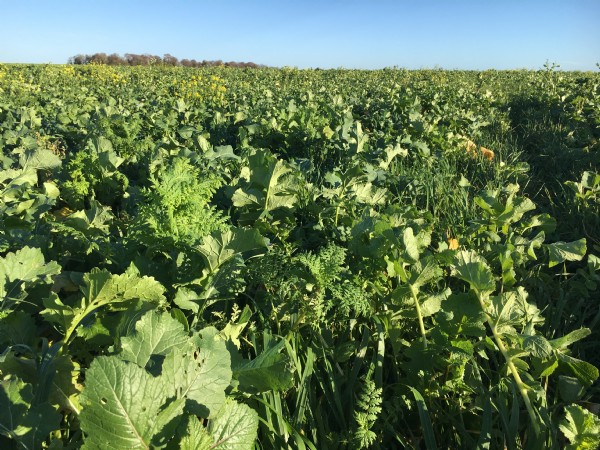

A cover crop protects the soil, particularly over the winter. It helps insure against soil erosion, nutrient loss through leaching and competition from weeds.
Green crop mixes are set to become a bigger part of crop rotations. They offer massive improvements to soil fertility.
Rising cost of fertilisers and other inputs combined with an increasingly uncertain climate means that it’s becoming ever more beneficial and indeed crucial to have good soils which are fertile, well structured and tolerant to drought. The dilemma for many arable farmers is affording the time and money to invest in soil health and improvement, but simply put, if we don’t, soils will rapidly become so poor they will adversely affect yield, crop quality and ultimately profitability.
It is the small remains of plant life that ultimately produce vital fertility and structure in the soil. Though this organic matter makes up only a small percentage of the soil content it is vital, since nothing will grow on clay, silt or sand alone. Doing nothing to replace it is therefore not an option.
The best and cheapest way of adding organic matter to the soil is to grow cover crops between cash crops. The cost of the seed and having no income from a field given over to cover crops can appear prohibitive but should be seen as an investment that will produce higher and better yields in subsequent years.
Date Posted: 18th January 2018



